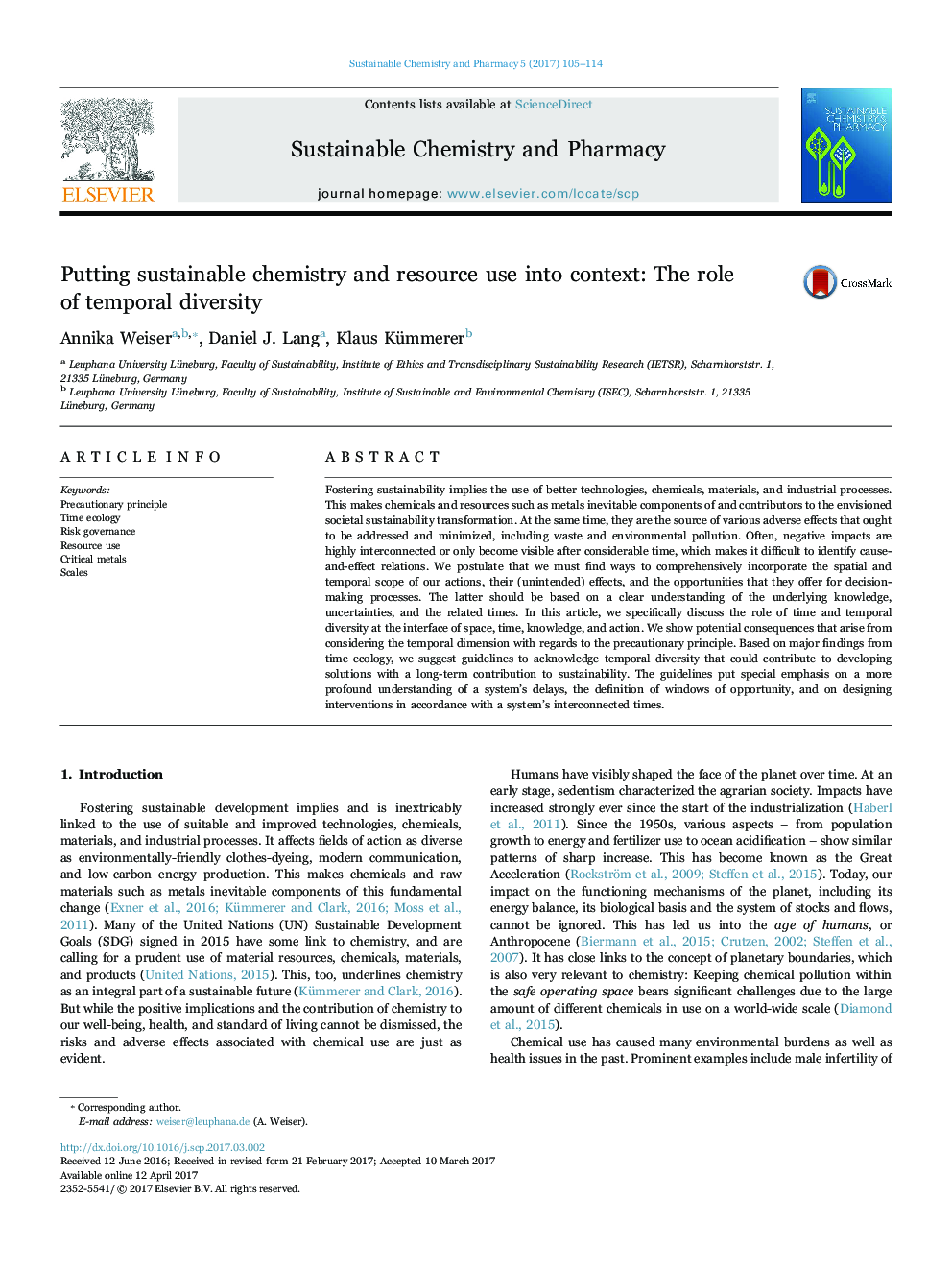| Article ID | Journal | Published Year | Pages | File Type |
|---|---|---|---|---|
| 5752169 | Sustainable Chemistry and Pharmacy | 2017 | 10 Pages |
â¢We must observe systems from various spatial scales, but also within appropriate time-frames.â¢Integration of temporal aspects is a necessary basis to build long-term sustainable solutions.â¢The precautionary principle can be one suitable tool to incorporate temporal diversity.
Fostering sustainability implies the use of better technologies, chemicals, materials, and industrial processes. This makes chemicals and resources such as metals inevitable components of and contributors to the envisioned societal sustainability transformation. At the same time, they are the source of various adverse effects that ought to be addressed and minimized, including waste and environmental pollution. Often, negative impacts are highly interconnected or only become visible after considerable time, which makes it difficult to identify cause-and-effect relations. We postulate that we must find ways to comprehensively incorporate the spatial and temporal scope of our actions, their (unintended) effects, and the opportunities that they offer for decision-making processes. The latter should be based on a clear understanding of the underlying knowledge, uncertainties, and the related times. In this article, we specifically discuss the role of time and temporal diversity at the interface of space, time, knowledge, and action. We show potential consequences that arise from considering the temporal dimension with regards to the precautionary principle. Based on major findings from time ecology, we suggest guidelines to acknowledge temporal diversity that could contribute to developing solutions with a long-term contribution to sustainability. The guidelines put special emphasis on a more profound understanding of a system's delays, the definition of windows of opportunity, and on designing interventions in accordance with a system's interconnected times.
Graphical abstractDownload high-res image (137KB)Download full-size image
